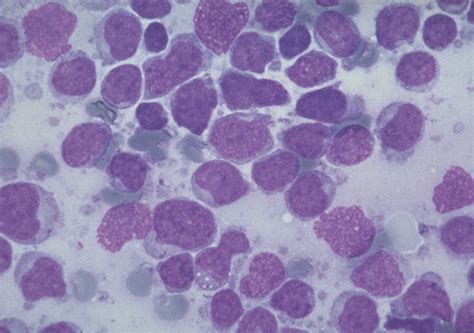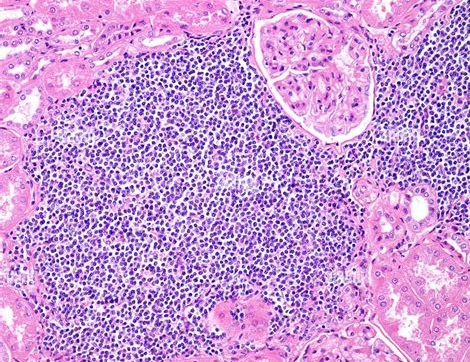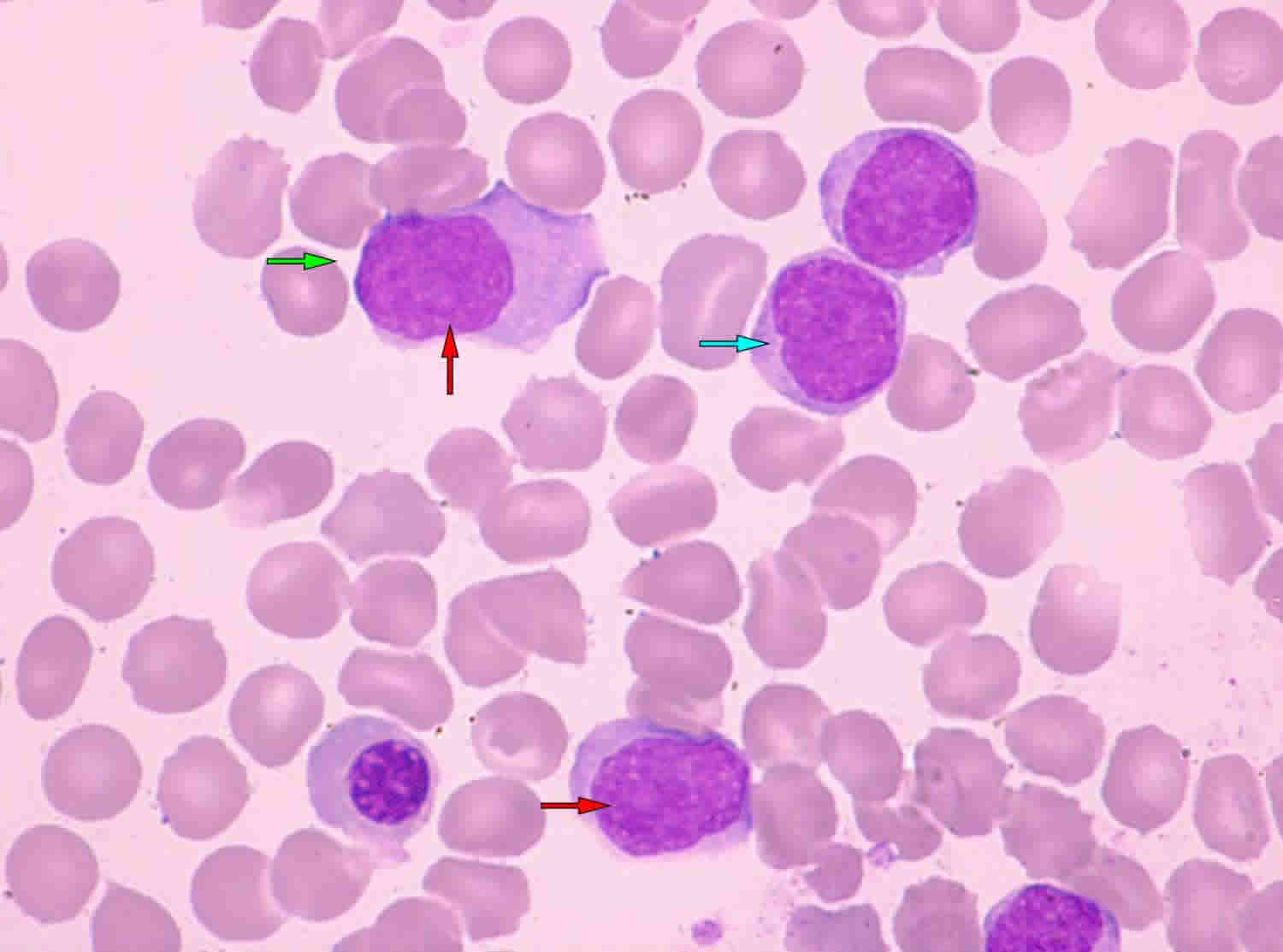What Is Mantle Cell Lymphoma and Its Symptoms?

Mantle cell lymphoma is a rare form of non-Hodgkin lymphoma. It accounts for about 3-10% of all non-Hodgkin lymphoma cases worldwide, with an annual incidence of 0.5 to 1 case per 100,000 people. This cancer begins in B-cells, a type of white blood cell, and disrupts the lymphatic system, which plays a key role in your immune defense.
You might notice symptoms like swollen lymph nodes or fatigue, but these can often go unnoticed. Recognizing these signs early can lead to quicker diagnosis and better treatment outcomes. Staying informed about this condition helps you take proactive steps for your health.
Key Takeaways
Mantle cell lymphoma is a rare cancer in B-cells. These cells are part of the lymphatic system. Spotting symptoms like swollen lymph nodes and tiredness early is important. Early treatment can lead to better results.
Changes in genes, especially in the cyclin D1 protein, cause this cancer. Learning about these changes helps you understand your health better.
If you have ongoing symptoms like fever, night sweats, or weight loss, see a doctor. Finding the disease early can make treatments work better.
Staying healthy with exercise can help during treatment. Taking care of your health is very important.
Talk to a doctor for advice that fits your needs. Acting early can help you manage mantle cell lymphoma more successfully.
Understanding Mantle Cell Lymphoma

What Is Mantle Cell Lymphoma?
Origin in B-cells and the lymphatic system
Mantle cell lymphoma begins in B-cells, a type of white blood cell that plays a vital role in your immune system. These cells originate in the lymphatic system, which helps your body fight infections and remove waste. In mantle cell lymphoma, B-cells grow uncontrollably, disrupting the normal function of the lymphatic system. This abnormal growth often leads to swollen lymph nodes and other symptoms.
Genetic mutations and the role of cyclin D1 protein
The development of mantle cell lymphoma is closely linked to genetic mutations. A specific chromosomal translocation, t(11;14)(q13;q32), causes the overexpression of a protein called cyclin D1. This protein disrupts the cell cycle, leading to uncontrolled cell division. Cyclin D1 also enhances the survival of cancerous cells by blocking proteins that promote cell death. This dual role makes cyclin D1 a key factor in the progression and aggressive nature of mantle cell lymphoma.
How It Differs from Other Lymphomas
Comparison with other non-Hodgkin lymphomas
Mantle cell lymphoma stands out as a distinct type of non-Hodgkin lymphoma. Unlike other forms, it is characterized by a unique chromosomal rearrangement (11;14 translocation) and overexpression of cyclin D1. It also tends to involve the bone marrow and gastrointestinal tract more frequently. The median age of diagnosis is around 71 years, and it often presents with widespread disease at the time of diagnosis.
Unique characteristics of mantle cell lymphoma
Several features make mantle cell lymphoma unique:
It accounts for 2-8% of all non-Hodgkin lymphomas.
It predominantly affects older males.
It often presents with generalized lymphadenopathy and disseminated disease.
Pathologically, it shows small lymphocytes with irregular nuclei.
It expresses specific markers like CD5 and CD43 but is negative for CD10 and CD23.
These characteristics help doctors distinguish mantle cell lymphoma from other lymphomas.
Risk Factors for Mantle Cell Lymphoma
Age, gender, and family history
Your risk of developing mantle cell lymphoma increases with age, particularly if you are between 65 and 74 years old. Men are more likely to develop this condition than women, with a male-to-female ratio of 1.46:1. A family history of lymphoma may also raise your risk.
Environmental and genetic influences
Environmental factors and genetic mutations play a significant role in mantle cell lymphoma. Mutations in genes like TP53 and KMT2D are associated with poor prognosis and early treatment failure. Additionally, certain ethnic groups, such as Caucasians, have a higher risk compared to others.
Genetic Mutation | Association with MCL | Prognostic Impact |
|---|---|---|
TP53 | Early treatment failure | Poor prognosis |
KMT2D | Early treatment failure | Poor prognosis |
RB1 | Deletion | Poor prognosis |
CDKN2A (p16) | Deletion | Poor prognosis |
High p53 expression | High-risk MCL | Poor prognosis |
Understanding these risk factors can help you stay informed and proactive about your health.
Symptoms of Mantle Cell Lymphoma

Early Symptoms
Painless swelling of lymph nodes
One of the earliest signs of mantle cell lymphoma is the painless swelling of lymph nodes. You may notice these swollen nodes in areas like your neck, armpits, or groin. This occurs due to the accumulation of cancerous B-cells in the lymphatic system, which causes the nodes to enlarge. Swollen lymph nodes are often the first noticeable symptom, prompting many individuals to seek medical advice.
Fatigue and unexplained weight loss
Fatigue is another common early symptom. You might feel persistently tired, even after adequate rest. This happens because your body is working harder to fight the disease. Additionally, unexplained weight loss, typically more than 10% of your body weight over six months, can occur. This weight loss is often linked to the body's immune response and the increased energy demands of cancerous cells.
Advanced Symptoms
Fever, night sweats, and gastrointestinal issues
As mantle cell lymphoma progresses, you may experience B symptoms, which include fever, drenching night sweats, and significant weight loss. About 33% of patients report these symptoms by the time they consult a doctor. Gastrointestinal issues, such as nausea, vomiting, or bloating, may also arise due to the spread of cancerous cells to the digestive tract.
Abdominal pain and decreased appetite
Advanced stages can lead to abdominal pain or a sense of fullness, often caused by an enlarged spleen or liver. This discomfort may reduce your appetite, contributing to further weight loss. You might also feel pressure or pain in your lower back, which can radiate down your legs.
Why Symptoms Occur
Impact on the lymphatic system and immune response
Mantle cell lymphoma disrupts the normal function of your lymphatic system. Cancerous B-cells proliferate in the mantle cell layer of lymphoid follicles, leading to lymph node enlargement. This immune dysfunction triggers symptoms like fever, night sweats, and weight loss.
Spread of cancerous cells to other organs
As the disease spreads, it affects other organs, causing a range of symptoms. For example, an enlarged spleen or liver can lead to abdominal discomfort, while tumors in the gastrointestinal tract may result in nausea or bloating. These changes highlight the aggressive nature of mantle cell lymphoma.
Seeking Medical Advice for Mantle Cell Lymphoma
Recognizing Warning Signs
Persistent or worsening symptoms
Certain symptoms should prompt you to seek medical advice immediately. These include fever, drenching night sweats, and unexplained weight loss of more than 10% of your body weight over six months. Persistent swollen lymph nodes, abdominal pain, or a distended abdomen may also indicate a problem. Other signs, such as nausea, vomiting, or a sensation of fullness, could suggest the spread of mantle cell lymphoma to other organs. If you notice these symptoms worsening or lasting longer than two weeks, consulting a healthcare provider is essential.
Symptoms affecting daily life
When symptoms begin to interfere with your daily activities, it’s time to act. Fatigue, lack of energy, and easy bruising can make even simple tasks challenging. You might also experience frequent infections or headaches, which could signal a weakened immune system. These nonspecific symptoms, while common in other conditions, should not be ignored if they persist or worsen. Early recognition of these warning signs can make a significant difference in your health outcomes.
Importance of Early Diagnosis
Benefits of early detection and treatment
Early diagnosis of mantle cell lymphoma offers the best chance for long-term remission. Starting treatment before the disease progresses can improve your quality of life and increase the likelihood of successful outcomes. Since this type of lymphoma is prone to relapse and resistance, early intervention is crucial. Specialized care from a team of experts can also enhance your treatment experience and provide access to advanced therapies.
Steps to take if symptoms are present
If you suspect symptoms of mantle cell lymphoma, take action promptly. Pay attention to signs like fever, night sweats, and unexplained weight loss. If swollen lymph nodes persist for more than two weeks or are accompanied by pain or fever, schedule a medical evaluation. Maintaining a healthy lifestyle, including regular exercise, can also help manage symptoms and support your overall well-being during treatment. Early consultation with a healthcare provider ensures timely diagnosis and appropriate care.
Mantle cell lymphoma (MCL) presents with a range of symptoms that you should not ignore. These include swollen lymph nodes, fatigue, and B symptoms like fever, night sweats, and unexplained weight loss. Advanced stages may cause abdominal pain, nausea, or an enlarged spleen or liver.
Early detection is key. Persistent symptoms, such as swollen lymph nodes or appetite loss, should prompt you to consult a healthcare provider.
Staying informed about MCL empowers you to take control of your health. Regular check-ups and awareness of warning signs can make a significant difference in achieving better outcomes.
FAQ
What is the survival rate for mantle cell lymphoma?
The survival rate depends on factors like age, stage, and treatment. On average, the five-year survival rate is around 50-70%. Early diagnosis and advanced therapies can improve outcomes.
Can mantle cell lymphoma be cured?
Mantle cell lymphoma is challenging to cure. However, treatments like chemotherapy, immunotherapy, and stem cell transplants can help manage the disease and extend remission periods.
How is mantle cell lymphoma diagnosed?
Doctors use a combination of tests, including blood tests, imaging scans, and biopsies. A biopsy confirms the diagnosis by identifying cancerous B-cells and specific markers like cyclin D1.
Is mantle cell lymphoma hereditary?
Mantle cell lymphoma is not typically hereditary. However, a family history of lymphoma may slightly increase your risk. Genetic mutations play a more significant role in its development.
What are the treatment options for mantle cell lymphoma?
Treatment options include chemotherapy, targeted therapy, immunotherapy, and stem cell transplants. Your doctor may recommend a combination of these based on your age, health, and disease stage.
Tip: Always consult a healthcare provider for personalized advice and treatment plans. Early intervention can make a significant difference in managing mantle cell lymphoma.
---
ℹ️ Explore more: Read our Comprehensive Guide to All Known Cancer Types for symptoms, causes, and treatments.
See Also
Understanding Hodgkin's Lymphoma: Key Symptoms to Recognize
Exploring Follicular Lymphoma: Symptoms You Should Know
Acute Lymphoblastic Leukemia: Identifying Its Main Symptoms
